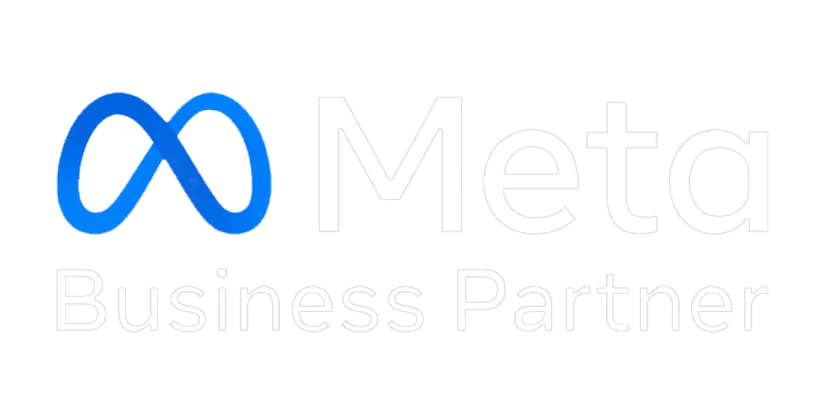Order Retention Made Easy: WhatsApp Strategies for D2C Brands
Introduction In the fiercely competitive D2C landscape, retaining existing customers is far more cost‑effective than acquiring new ones. With rising acquisition costs, repeat orders are the backbone of D2C brand growth—60% of revenue typically comes from returning customers.WhatsApp, with its staggering 98% open rates and near-real-time engagement, offers an ideal medium to nurture repeat purchases. In this blog, we’ll unravel high-impact WhatsApp strategies that boost customer retention, order retention, and improve your WhatsApp retention rate. Why Customer & Order Retention Matters Retaining customers boosts profitability—an increase of just 5% can improve profits by 25–95%.Given that email and SMS platforms struggle with low open rates, WhatsApp provides a competitive edge for post‑purchase and reorder communication. Why WhatsApp Works for D2C Brands Core WhatsApp Strategies for Order Retention 1. Post‑Purchase Support & Order Updates Use Business API to automate shipping notifications, tracking info, and delivery alerts. This boosts trust and engagement, shortening response times with chatbots or live agents. 2. Automated Reorder Reminders Trigger messages (e.g., Day 30 for consumables) to suggest restocking. LimeChat reports up to 3x revenue with reorder campaigns. 3. Cart Recovery Nudges With 70% carts abandoned, WhatsApp reminders with clear CTAs can recover a significant portion. Brands using recovery flows often see +35% cart conversion. 4. Personalized Recommendations & Upsells Skincare brands using WhatsApp recommended products saw a 28% increase in repeat orders. Campaigns using past behavior and AI boost conversions and CLTV. 5. Segmented Broadcast & Drip Campaigns Target based on purchase history or frequency. Strategic WhatsApp broadcasts can cut churn, grow CLV, and maintain engagement at 7–10 messages/year. Best Practices & Automation Tips Seamless WhatsApp Integration: Tech & Tools Measuring WhatsApp Retention Rate & ROI Aim for 98% open rate, 45–60% CTR, and 3× ROI.Compare repeat order rates among customers engaged on WhatsApp vs. others. For instance, reorder reminders can trigger 22%+ reorders, while conversational support yields 3.5% of total orders per brand. Conclusion & Call to Action WhatsApp isn’t just a chat app—it’s a powerful channel to retain customers, drive repeat orders, and boost CLV. From automated reorder nudges to recovery flows and personal upsells, these strategies help D2C brands stay connected and increase revenue.🎯 Next step: Start with one strategy—like sending reorder reminders on a 30-day timer or launching your first cart recovery flow.Want help setting up flows and measuring ROI? Contact us at TheBotMode.com for a free consultation or demo 🚀 FAQs 1. Can WhatsApp fully replace email/SMS for order retention? No—each serves a distinct purpose. Use WhatsApp for high-touch, time-sensitive and conversational touchpoints; retain email for resolution-heavy or detailed content. 2. How frequently should I send WhatsApp reminders? Follow the “low frequency, high relevance” model—7–10 quality messages per year per customer ensures retention without fatigue. 3. What opt-in method works best? Use double opt-in via checkout or welcome emails, supplement with SMS/website CTAs and click-to-WhatsApp buttons. 4. How do I implement 1‑click reorders? Use API-triggered reorder workflows: find reorder date from first purchase + customer data, then include a purchase link with pre-filled carts . 5. Can I track ROI from WhatsApp strategies? Yes—integrate UTM parameters or unique coupon codes in messages, and calculate based on repeat orders, AOV uplift, and cost per chat/flow.
How to Build a High‑Performing WhatsApp Campaign in 2025
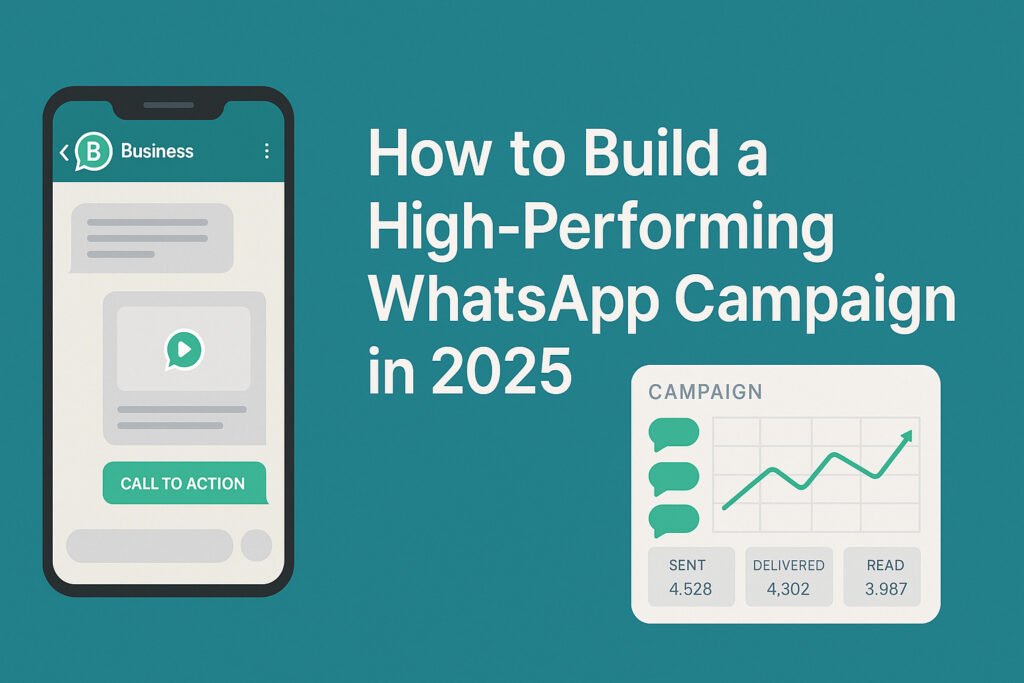
Introduction WhatsApp has emerged as one of the most impactful marketing channels in 2025, boasting unmatched open rates, real-time interactivity, and a massive global user base. For businesses looking to drive conversions and deepen customer relationships, creating a high-performing WhatsApp campaign is no longer optional—it’s essential. This guide will walk you through every step of building a successful campaign using the latest tools, strategies, and compliance standards. 1. Understanding WhatsApp Campaign Types (Promotional, Transactional, Conversational) WhatsApp campaigns fall into three main categories: Each type requires different message formats and approval via pre-approved templates for outbound messages. 2. Getting Started: API Setup & Access Businesses can choose between: API Requirements: You can use cloud-based or on-premises API solutions. In 2025, Meta has simplified onboarding through providers like TheBotMode. 3. Trend Spotlight: What’s New in 2025 4. Define & Segment Your Audience Use your CRM, website, or click-to-chat ads to build your opt-in list. Segment audiences by: Segmentation ensures relevance and improves engagement. 5. Template Design & Personalization Design templates that resonate with users: All outbound templates must be approved before use via Meta’s template review. 6. Timing & Scheduling Strategies Ensure frequency capping to avoid spam and high opt-out rates. 7. Rich Media & Interactive Messaging Enhance user experience using: Use multimedia to highlight USPs and product benefits quickly. 8. Automation vs Human Touch Leverage chatbots for: Hand off to human agents for: This hybrid model maximizes efficiency and customer satisfaction. 9. Compliance & Quality Control WhatsApp marketing is tightly regulated: 10. Analytics & Performance Optimization Track the following metrics: Use analytics dashboards provided by TheBotMode or Meta to refine your approach continuously. 11. Case Examples & Tools to Try Popular tools include: Use Cases: 12. Future Outlook: Ads & Monetization on WhatsApp WhatsApp will soon support: Integration with Meta’s ad suite allows for end-to-end user journeys starting from social ads to WhatsApp. Conclusion & Next Steps WhatsApp campaigns are indispensable in 2025. With the right API access, strategic segmentation, interactive content, and robust analytics, businesses can drive unmatched engagement and conversions. Next Steps: FAQs Do I need API or can I use the App? For large-scale or automated campaigns, API is required. The app is sufficient for basic manual outreach. How many messages can I send per day? Message limits depend on your quality rating and verified status. API tiers define your daily cap. Is WhatsApp campaign marketing legal in India? Yes, if you follow opt-in rules and DPDPA data protection laws. Can I add images and videos to messages? Yes, WhatsApp supports rich media in both transactional and promotional messages via the API.
WhatsApp Coexistence: Boost Your Retail Business with This Powerful Feature

Hey there, retail champions! You already know WhatsApp is a lifesaver when it comes to communicating with your customers. Now, WhatsApp is rolling out a new feature called WhatsApp Coexistence (Coex), which lets you manage personal interactions and automation seamlessly using the same WhatsApp number. So, What Exactly is WhatsApp Coexistence? Think of Coexistence as your new assistant—it lets you keep the warmth of personal conversations through the WhatsApp Business App, while still harnessing the power of automation and CRM integrations via the WhatsApp Business Cloud API. One number, dual power! Why Retailers Will Love WhatsApp Coexistence Get Started in Four Easy Steps 1.Quick Update & Verification: Simply update your WhatsApp Business App (version 2.24.17+) and verify your business account on Meta. 2.Connect to Facebook: Link your WhatsApp Business App to your Facebook Page. 3.Activate Cloud API: Turn on Cloud API through the Meta Business Manager portal. 4.Easy Sync with QR Code: Use a QR code provided by WhatsApp to effortlessly sync your conversations. A Few Things to Keep in Mind Practical Ways Retailers Can Benefit Final Words WhatsApp Coexistence isn’t just another tech feature—it’s your new business ally. It perfectly blends personal touchpoints with efficient automation, allowing your retail business to grow without losing the human touch. Ready to take your retail customer experience to the next level? Drop your thoughts below and let’s chat!
Using WhatsApp Broadcasts to Launch New Products – A Step-by-Step Guide 2025
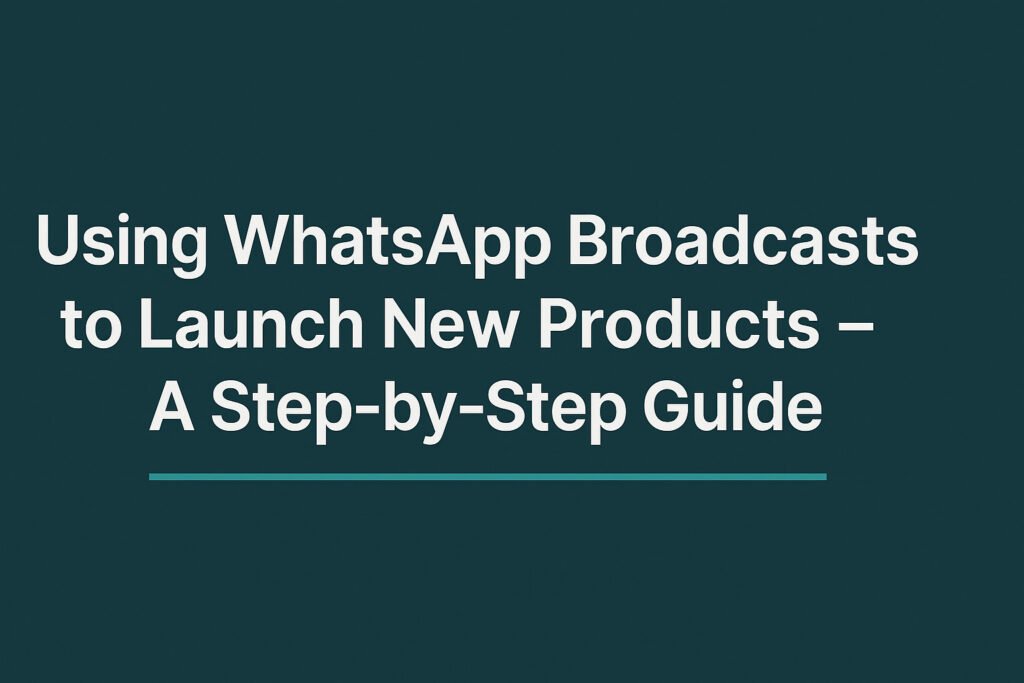
Launching a new product is a pivotal moment for any D2C brand. In 2025, WhatsApp Broadcasts have become one of the most effective tools for grabbing attention and driving conversions. With industry-leading open rates and instant engagement, WhatsApp can turn a typical product drop into a high-impact launch event. In this guide from TheBotMode, you’ll learn how to strategically plan and execute a winning product launch using WhatsApp Broadcasts. Step 1: Build a Qualified WhatsApp Subscriber List Before sending any broadcast, you need a compliant and engaged audience. WhatsApp requires explicit opt-in to receive business messages via the API. Pro tips to grow your list: Step 2: Segment Your Audience for Relevance Segmenting your list ensures the message feels personalized and timely, boosting engagement. Example segments for a skincare launch: TheBotMode makes this seamless with dynamic filters and auto-tagging based on customer behavior. Step 3: Design a Launch Sequence with Timed Broadcasts Avoid sending everything at once. A staggered broadcast flow builds anticipation and nurtures buyer intent. Suggested 3-day WhatsApp launch funnel: 🛍️ Add CTA buttons like [Shop Now], [View Product], or [Claim Offer]. Step 4: Use Rich Media to Tell a Visual Story WhatsApp supports various media formats that can significantly enhance your product storytelling. Effective formats include: Use storytelling to show why this product matters—not just what it is. Step 5: Create Urgency with Limited-Time Offers WhatsApp is perfect for time-sensitive marketing. Create urgency to push conversions. Urgency-driven elements: Enable Quick Reply Buttons to capture fast responses and qualify interest. Step 6: Track Performance and Optimize in Real-Time Monitor key performance metrics post-broadcast using TheBotMode’s campaign analytics. Essential metrics to track: Analyze what worked—and optimize your next campaign accordingly. Step 7: Follow Up and Nurture Post-Launch Your launch doesn’t end after the broadcast. Keep the momentum going. Follow-up strategies: You can automate this flow via TheBotMode’s smart sequences. Conclusion Using WhatsApp Broadcasts to launch new products gives D2C brands an edge—thanks to real-time engagement, high visibility, and personalized communication. When combined with automation tools like TheBotMode, you can transform your product launch into a high-conversion experience. FAQs Q. What is the maximum number of users I can send a WhatsApp Broadcast to? With the WhatsApp Business API, there’s no hard limit—as long as users have opted in. Make sure your number is verified and maintain a high-quality rating. Q. Can I send a broadcast to users who haven’t messaged me? No. WhatsApp strictly requires opt-in before initiating any business communication. Q. How is a WhatsApp Broadcast different from a group message? A broadcast sends messages individually. Recipients don’t see each other, and their replies are private. Q. Is WhatsApp better than email for product launches? WhatsApp has much higher open and response rates, making it ideal for launches. However, combining email and WhatsApp offers the best omnichannel experience.
WhatsApp Product Catalog Best Practices for Shopify Stores in 2025

Introduction In 2025, WhatsApp has emerged as a vital growth channel for D2C eCommerce brands—especially those powered by Shopify. With exceptionally high engagement rates and real-time customer interactions, integrating your product catalog with WhatsApp is no longer a nice-to-have; it’s a necessity. This blog outlines the best practices for building and optimizing a WhatsApp product catalog tailored to Shopify stores. The goal? To enhance product discovery, drive conversions, and deliver a seamless mobile-first shopping experience. Why WhatsApp Catalogs Matter for Shopify Sellers A WhatsApp product catalog enables your brand to showcase items directly within customer chats. Shoppers can view, inquire about, and even purchase products without ever leaving WhatsApp. For D2C brands, this results in: Best Practices to Set Up a WhatsApp Catalog for Shopify 1. Connect Shopify with a Verified WhatsApp Business API Start by verifying your WhatsApp Business account. Then integrate your Shopify product database using TheBotMode’s API connector. Key Benefits: 2. Organize Products into Smart Categories Keep your catalog easy to navigate. Group products based on shopping behavior and UX simplicity: 3. Use High-Quality Images and Descriptive Copy Make every listing count. Ensure your products are: 4. Include Clear CTAs and Direct Purchase Links Every product in your catalog should feature: 5. Enable Smart Filters and Quick Replies Improve UX with features that support quicker browsing and selection: This is especially helpful for mobile-first shoppers in India and other D2C markets. Best Timing for Sharing WhatsApp Catalogs Based on TheBotMode’s data, optimal send times for catalog campaigns are: Avoid early mornings or late nights to reduce opt-outs and avoid being marked as spam. Optimize for Local and Global Shoppers If your Shopify store serves customers across regions: Use Catalog Analytics to Improve Performance Monitor and improve your product catalog strategy by tracking: TheBotMode’s analytics dashboard provides real-time insights to help you refine catalog structure, offers, and timing. Conclusion Optimizing your WhatsApp product catalog is one of the most strategic moves for Shopify-based D2C brands in 2025. It delivers a mobile-first, frictionless, and engaging shopping experience—right where your customers are. With TheBotMode’s automation, analytics, and seamless Shopify integration, you can build a high-performance WhatsApp catalog engine that boosts visibility and drives sales around the clock. FAQs Q1: What is a WhatsApp product catalog? A WhatsApp catalog is a digital storefront embedded in WhatsApp chats that allows businesses to display products with descriptions, prices, and direct links. Q2: Can I integrate my Shopify store with WhatsApp? Yes. Using TheBotMode’s integration, you can sync products directly from your Shopify store into WhatsApp via the official Business API. Q3: How many products can I add to a WhatsApp catalog? You can list up to 500 products, but for best user experience, prioritize your top-performing categories. Q4: Can customers buy directly from WhatsApp? Yes. Each catalog item can include a direct Shopify checkout link, allowing instant transactions within chat. Q5: Is WhatsApp catalog marketing compliant in India? Yes, as long as your business follows WhatsApp’s commerce policy and messages are sent to users who have opted in.
How to Use WhatsApp for Smart Upselling in 2025
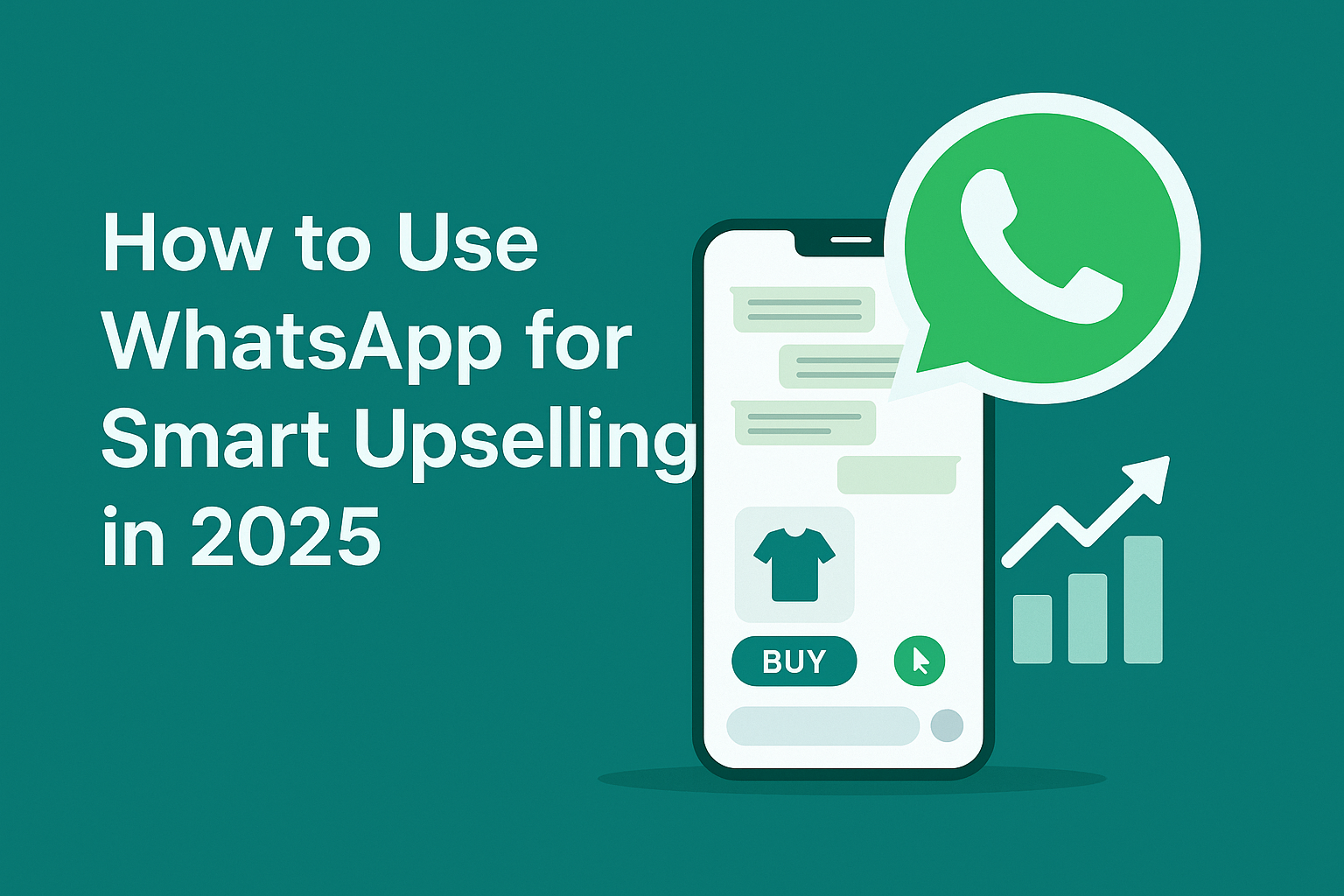
Introduction WhatsApp isn’t just for chatting—it’s become a powerhouse for conversational commerce. With over 2.5 billion+ users and up to 98 % message open rates, brands can now convert chats into sales . Yet many businesses miss the opportunity to use WhatsApp as a direct upselling channel. This blog reveals how to implement smart, personalized upsells using The Bot Mode, ensuring real growth in 2025. Why Upselling via WhatsApp Works in 2025 Key WhatsApp Features to Leverage Best Practices for Smart Upselling Upselling Scenarios & Campaign Ideas Scenario Smart Upsell Tactic Abandoned Cart Send chat reminders + suggest a premium bundle Post-Purchase Recommend complementary add-ons in the confirmation chat Order Confirmation Immediately present discounts on future upgrades Broadcast Campaigns Share curated new collections or limited-time offers Metrics to Track for ROI Track these in your Bot Mode dashboard for data-backed optimization: Tools & Integrations via The Bot Mode Step-by-Step Smart Upselling Blueprint Real-Life Case Study A direct-to-consumer brand used The Bot Mode’s API upsell flow and saw a 27 % increase in average order value, thanks to targeted post-purchase add-ons and catalog-driven messages. Conclusion & Call to Action Smart upselling on WhatsApp now means delivering personalized, well-timed offers through end-to-end automated chat flows. With The Botmode, you’re equipped to boost AOV, retention, and revenue, starting with just one upsell flow this week. 🔗 Dive deeper: WhatsApp for Upselling Guide Ready to launch? Start your WhatsApp API upsell flow today! FAQs 1. What upselling messages work best on WhatsApp? Use concise messages featuring product images, clear CTAs, and urgency tags like “Limited stock!” 2. How often should I send upsell messages? The ideal frequency is 1–2 flows per buyer session, such as cart abandonment or post-order. 3. Can The Botmode fully automate upsells? Absolutely. The platform supports full API-driven automation with fallback to human agents when needed.
WhatsApp Support for D2C Brands: Boost Engagement & Sales
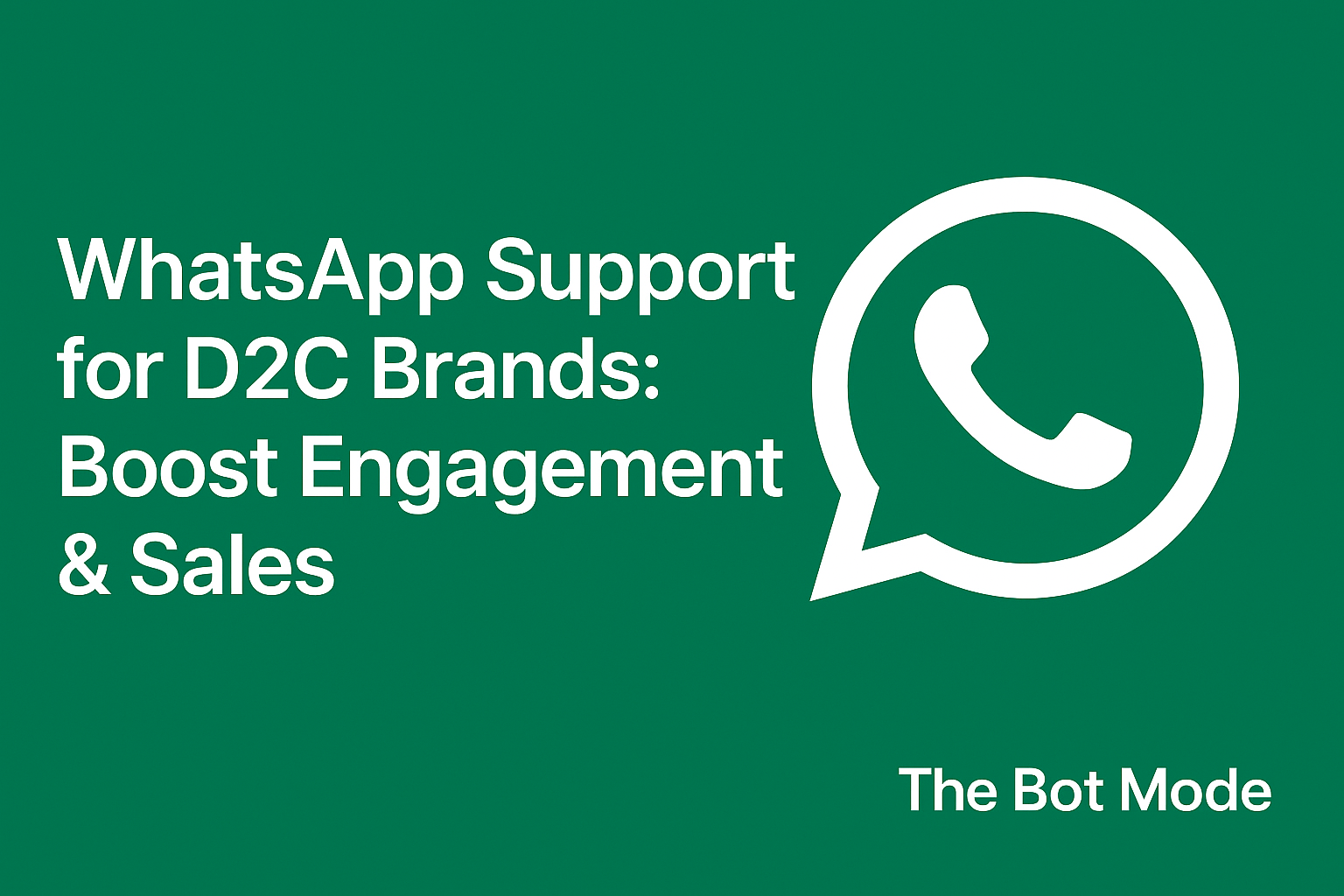
Introduction In a world where consumers crave real-time, personalized interactions, WhatsApp has emerged as a vital communication channel for D2C brands. Whether a shopper has a query, abandons their cart, or needs a loyalty nudge, conversational support converts. The Bot Mode offers intuitive, scalable WhatsApp automation that turns support into sales. Here’s how it all works. Why WhatsApp Is Essential for D2C Brands These stats highlight the unparalleled impact of WhatsApp—your best channel for visibility, engagement, and conversion. How The Bot Mode Transforms WhatsApp Into a Sales Engine Real-Time, 24/7 Customer Support The Bot Mode combines intelligent bots with seamless human-agent handoffs, ensuring instant replies—even outside office hours. This level of responsiveness fosters trust and reduces churn by handling queries swiftly and accurately. Cart Recovery & Lead Nurturing With automated workflows, The Bot Mode can trigger cart abandonment reminders—recovering up to 60% of abandoned cart. Timely, personalized nudges help guide shoppers back to checkout. Promotional Campaigns & Broadcasts Segment your audience using CRM data and broadcast tailored offers, flash-sales, and new product drops via WhatsApp. With 15–50% CTR on campaigns in regions like India and Brazil, The Bot Mode maximizes campaign ROI. Built-in Features That Maximize Support & Sales API & No‑Code Integrations Easily connect The Bot Mode with Shopify, WooCommerce, and CRMs to auto-sync product catalogs, order info, and client details. This means agents can share product cards or checkout links directly in chat—making WhatsApp a true sales channel. Powerful Automations & Workflows Design workflows with triggers, conditional paths, and messaging sequences. Automate everything—from welcome messaging to post-purchase support—without writing any code. Human-Agent Escalation Bots manage routine tasks, while complex queries seamlessly escalate to human agents. This ensures empathy, clarity, and user satisfaction—especially with tricky post-sales issues. H2: Results D2C Brands Can Expect with The Bot Mode H2: Why The Bot Mode Is the Best WhatsApp Solution for D2C Brands H2: Conclusion & Call to Action WhatsApp isn’t just a messaging app—it’s a high-converting, customer-first commerce channel. The Bot Mode amplifies this potential—boosting sales, loyalty, and engagement with smart, automated conversations.Ready to convert more with WhatsApp? Get started with The Bot Mode today! H2: FAQs 1. When can I get started with WhatsApp and The Bot Mode? You can launch automated WhatsApp support in days—no developer required. 2. Is WhatsApp automation developer-friendly? Not at all—it features no-code workflows for easy setup. 3. Is The Botmode suitable for both startups and scale-ups? Yes, our flexible plans cater to brands of all sizes. 4. What are the costs? We offer tiered plans based on messaging volume, which is suitable for growing budgets. 5. Is customer data secure and compliant? Absolutely. WhatsApp encryption and compliance with GDPR are built in.
Boost D2C Product Launches: WhatsApp Strategies That Drive Sales
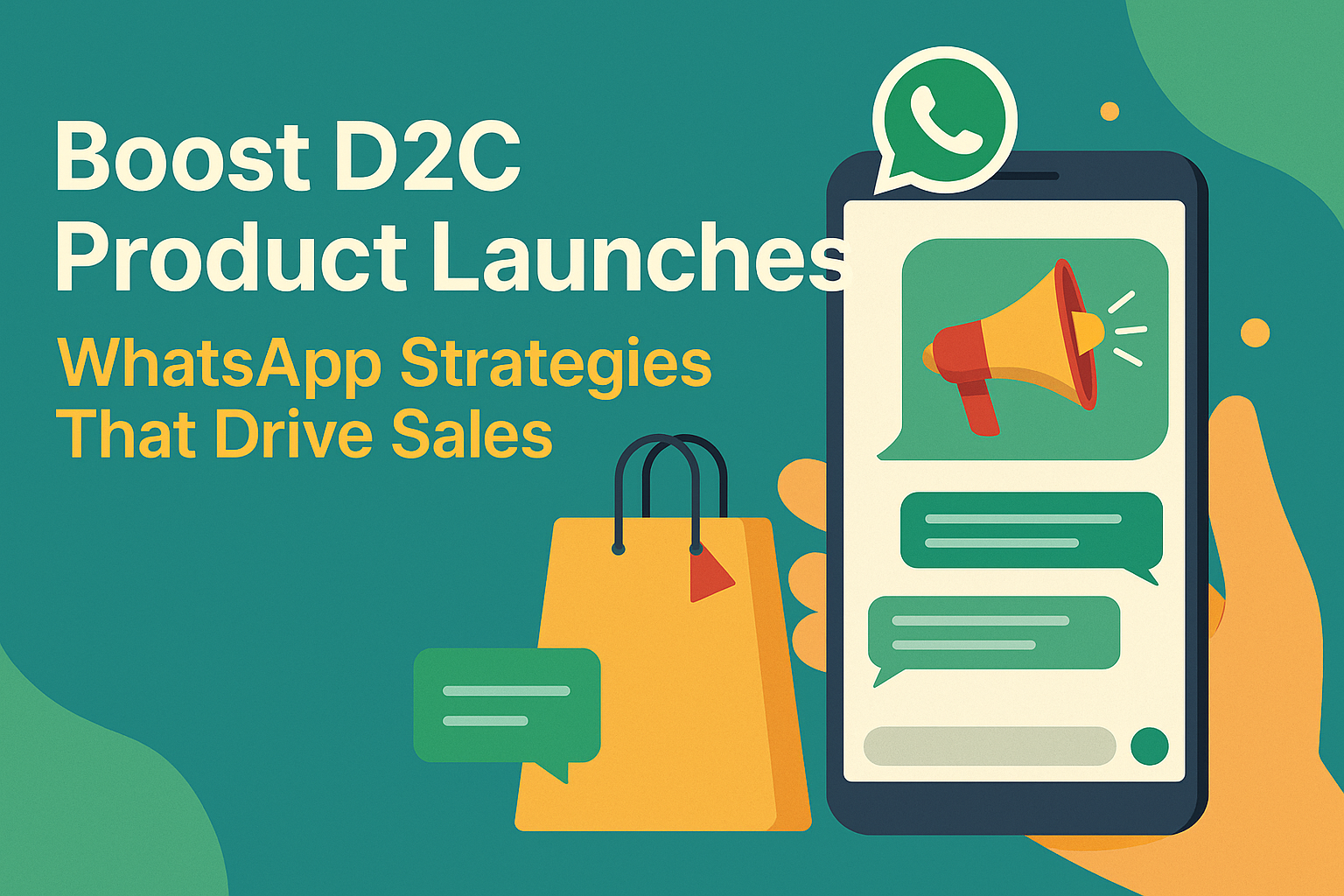
Why WhatsApp Is a Game-Changer for D2C Product Launches In today’s crowded eCommerce space, grabbing consumer attention during a product launch is a challenge. WhatsApp offers D2C brands a direct, personal, and high-engagement channel with open rates reaching 98%, making it a must-have tool for modern product campaigns. With over 500 million users in India alone and mobile-first behavior dominating digital consumption, WhatsApp aligns perfectly with how today’s consumers discover and engage with new products. Planning Your WhatsApp Product Launch Campaign A successful WhatsApp campaign starts with a smart strategy. Here’s how to prepare: Define Your Campaign Goal Be crystal clear about what you want from your campaign. Are you: Each goal shapes your messaging flow. Segment Your Audience Personalization is key. Segment your contact list into: Build Hype with Pre-Launch Messages Start teasing your audience days before launch with: Use WhatsApp’s opt-in flows via website popups, social ads, or QR codes. Leverage Chat Automation Tools Automate welcome messages, reminders, FAQs, and even purchase flows using smart bots and workflows. 👉 Launch Smarter with WhatsApp Automation Message Types That Convert During Launch Not all messages are created equal. Use a mix of high-performing formats: Promotional Templates Highlight: Interactive Messages Use: Voice Notes & Videos Add a personal touch. Use founder voice notes or mini product demos via video. Customer Support Follow-Ups Offer fast responses on delivery, FAQs, and even live order tracking. Real-Time Engagement & Conversational Selling WhatsApp thrives on conversation. During your launch window: It’s a perfect mix of automation + personalization. Post-Launch Retention & Re-Engagement The sale isn’t the end. It’s the start of a relationship. Conclusion D2C product launches are no longer about just a flashy email or a big sale day. WhatsApp allows you to build real-time excitement, offer personal engagement, and create lasting loyalty. With the right strategy and tools, your next launch can skyrocket traffic and conversions. Ready to drive real sales with WhatsApp?👉 Explore Launch Solutions at The Bot Mode FAQs How can WhatsApp help with D2C product launches? WhatsApp helps you build anticipation, send instant launch alerts, engage in real-time, and retarget customers—all on a personal, high-converting channel. What types of messages perform best on WhatsApp? Messages with rich media, quick replies, personalized text, and conversational CTAs tend to perform the best. How do I integrate WhatsApp with my D2C brand platform? You can integrate WhatsApp with your CRM or eCommerce tool using platforms like The Bot Mode for automated flows and audience segmentation.
WhatsApp Cart Recovery Strategies to Reduce Abandonment in 2025
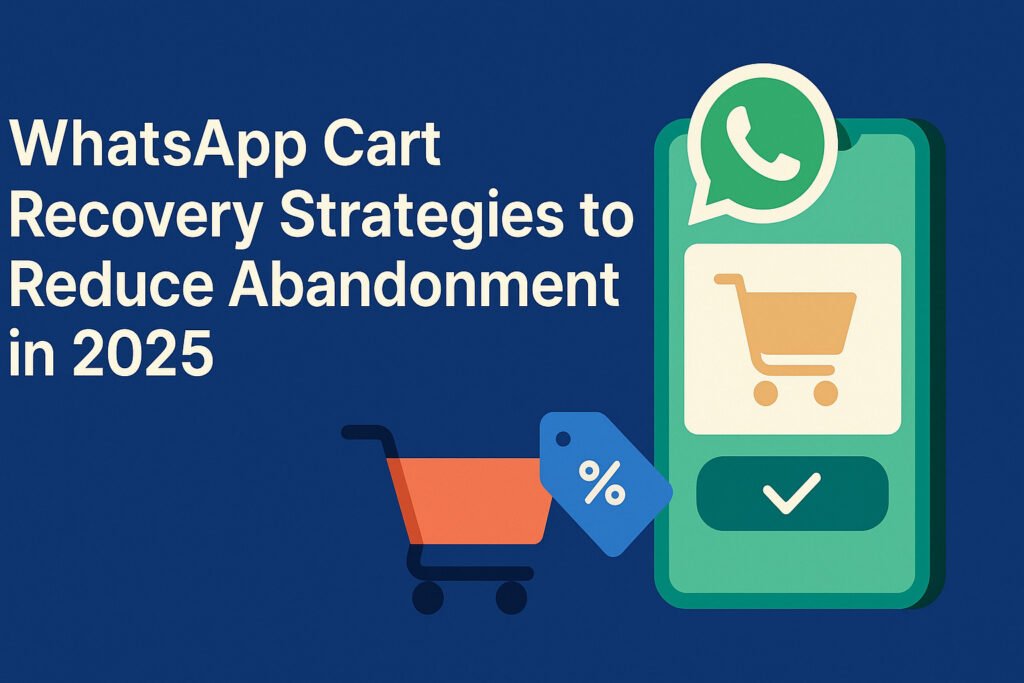
Introduction Abandoned carts are one of the biggest revenue leaks in D2C eCommerce. On average, 7 out of 10 online shoppers leave without completing their purchase. But what if you could re-engage them directly on a platform they actively use every day—WhatsApp? With high open rates and real-time engagement, WhatsApp is emerging as the most effective channel for recovering lost sales. In this blog, we explore the most impactful WhatsApp cart recovery strategies that can help reduce abandonment and boost conversions for your brand in 2025. Why Use WhatsApp for Cart Recovery in D2C eCommerce 1. 98% Open RateWhatsApp messages are opened and read far more frequently than email or SMS. 2. Real-Time EngagementUnlike traditional recovery emails, WhatsApp messages feel more like personal reminders, increasing the likelihood of a response. 3. Higher Conversion RatesFollow-up messages sent via WhatsApp result in 20% to 30% higher recovery rates, outperforming all other communication channels. Top WhatsApp Cart Recovery Strategies 1. Send a Personalized Reminder Within 30 Minutes Timing is critical. Reach out within 30 minutes of abandonment to keep the purchase intent fresh. Use TheBotMode to automate the reminder flow. Message Template Example:Hi [Name], we noticed you left some items in your cart. Complete your order now while they’re still in stock. 2. Offer a Time-Limited Incentive Create urgency by offering a limited-time discount or free shipping to encourage immediate action. Example:Still interested? Enjoy 10% off your cart if you checkout within the next 2 hours. 3. Use Smart Product Reminders with Images Visual reminders help reinforce product recall and increase click-through rates. With TheBotMode, you can send dynamic product messages featuring images, prices, and buttons. Benefits: 4. Build a Multi-Step Recovery Sequence Not all customers convert on the first attempt. Set up a structured 3-step reminder flow: You can automate this entire sequence using TheBotMode’s workflow builder. 5. Collect Feedback from Non-Converters If a customer doesn’t complete the purchase even after reminders, ask for feedback. It may reveal checkout barriers or pricing concerns. Example Message:We noticed you didn’t complete your order. Was there anything we could improve? Use this data to refine your product, messaging, and checkout process. Advanced Strategy: Use Customer Segmentation Not all customers are the same. Segment your users to personalize messages based on: TheBotMode lets you add customer tags and create behavioral segments for precise targeting. Seamless Integration with Shopify & WooCommerce TheBotMode integrates directly with leading eCommerce platforms. It automatically syncs: This allows you to set up personalized cart recovery flows with minimal effort. WhatsApp Cart Recovery in Action One of our D2C fashion clients used TheBotMode’s cart recovery automation and achieved: Conclusion Abandoned carts don’t have to mean lost revenue. With a well-structured WhatsApp cart recovery strategy, D2C brands can re-engage users in real time, increase conversion rates, and improve customer experience. Platforms like TheBotMode make it easy to automate recovery, personalize messaging, and drive results without manual follow-ups. If you’re not using WhatsApp for cart recovery in 2025, you’re leaving revenue on the table. FAQs Q1: What is WhatsApp cart recovery?WhatsApp cart recovery is the practice of sending automated follow-up messages to users who abandoned their carts, encouraging them to complete their purchase. Q2: How effective is WhatsApp for recovering abandoned carts?Brands using WhatsApp for cart recovery typically see up to 30% conversion, outperforming email and SMS. Q3: Can WhatsApp recovery flows be automated?Yes. Platforms like TheBotMode offer full automation for recovery flows based on timing, cart value, and user behavior. Q4: Is WhatsApp cart recovery compliant in India?Yes. As long as users have opted in to receive WhatsApp updates, it is fully legal and compliant with Meta’s policies. Q5: How do I start using TheBotMode for cart recovery?You can integrate TheBotMode with your Shopify or WooCommerce store and activate ready-to-use recovery workflows within minutes. Book a Free Demo with TheBotMode
Best Time to Send WhatsApp Campaigns for Maximum Conversions

WhatsApp has evolved far beyond a messaging app—it’s now a high-performance marketing channel for D2C brands. But timing your campaigns poorly can undermine even the best offers. So, when is the best time to send WhatsApp campaigns in 2025? Let’s explore the optimal timings, backed by performance data and expert insights from TheBotMode. Why Timing Matters in WhatsApp Marketing WhatsApp marketing campaigns often achieve open rates of over 95%. However, the real metric that matters is conversion. When you send the message plays a critical role in influencing: Based on internal data, optimizing message timing can boost conversions by up to 30%, especially in fast-moving D2C segments like skincare, fashion, and wellness. Best Times to Send WhatsApp Messages in 2025 Morning Window: 9:00 AM – 11:30 AM This is when most users check their phones and engage with offers. It’s ideal for: Afternoon Slot: 1:00 PM – 3:00 PM Post-lunch hours work well for low-pressure content, including: Evening Prime Time: 6:30 PM – 8:00 PM Most D2C shoppers browse at leisure during this window. Perfect for: Times to Avoid Sending WhatsApp Messages How to Improve Open Rates and Conversion Rates 1. Segment Your Audience Use behavioral triggers and purchase history to send contextually relevant messages. 2. Use TheBotMode’s Smart Scheduler Automate WhatsApp messages to be sent at the optimal time for each customer segment. 3. Personalize Every Campaign Use dynamic tags like first names, product preferences, and urgency phrases to increase click-through rates. 4. Test, Learn, Repeat Run A/B tests for different time slots. Measure open rate and conversion performance in TheBotMode’s analytics dashboard. How TheBotMode Helps You Nail Campaign Timing With TheBotMode’s AI-driven automation tools, you can: Case Study: 20% Conversion Boost with Better Timing A D2C skincare brand using TheBotMode made a simple change: they shifted all campaign sends from mid-day to the evening window (6:30–8:00 PM). The results: This shows how strategic timing can directly impact sales performance. Conclusion To succeed with WhatsApp marketing, timing is everything. It’s not just about what your message says—it’s about when it reaches the customer. The right message, sent at the right time, delivers measurable results. Start optimizing your WhatsApp campaign schedule with TheBotMode’s Smart Scheduler and watch your engagement and conversions grow. FAQs Q1. What is the best time to send WhatsApp campaigns for D2C brands? The most effective time windows are 9:00–11:30 AM and 6:30–8:00 PM, based on user engagement trends. Q2. Can I schedule WhatsApp messages in advance? Yes. TheBotMode allows full automation and scheduling based on customer segments and behavior. Q3. How do I know if my campaign timing is effective? Use A/B testing and TheBotMode’s analytics dashboard to compare performance across different time slots.













